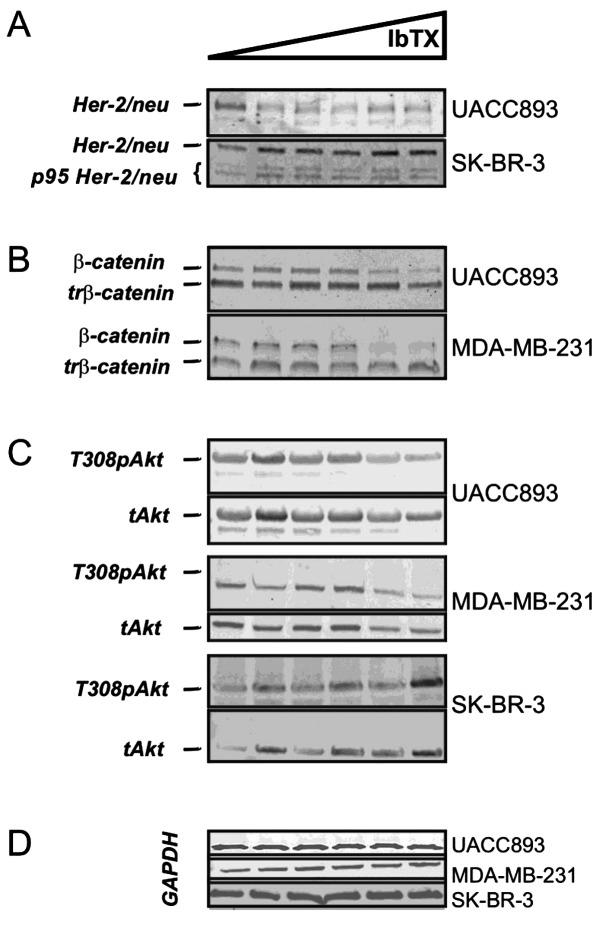Figure 3.
IbTX differentially regulates oncogenic pathways. (A) IbTX attenuated the HER-2/neu levels in the UACC893 cells (HER-2/neu, UACC893). SK-BR-3 cells express full length (HER-2/neu, SK-BR-3) and truncated (p95 HER-2/neu, SK-BR-3) oncoprotein isoforms with both being increased by IbTX. (B) IbTX downregulated the full length (β-catenin) but not truncated (trβ-catenin) β-catenin isoforms in the UACC893 and MDA-MB-231 cells. (C) In the UACC893 cells, IbTX attenuated phosphorylated (T308pAkt, UACC893) but not total Akt (Akt, UACC893). Both phosphorylated (T308pAkt, MDA-MB-231) and total (Akt, MDA-MB-231) Akt were decreased in the MDA-MB-231 cells with IbTX. In SK-BR-3 cells, phosphorylated (T308pAkt, SK-BR-3) and total (Akt, SK-BR-3) Akt increased at high IbTX concentrations. (D) GAPDH was used in the UACC893, MDA-MB-231 and SK-BR-3 cell immunoblotting to ensure equal protein loading. IbTX, iberiotoxin.

